Everest Base Camp Trekking Cost-Treklanders Adventures
Overview:Millions of people are keen to learn about the costs associated with Everest Base Camp Trekking. If you’re genuinely interested in the c...
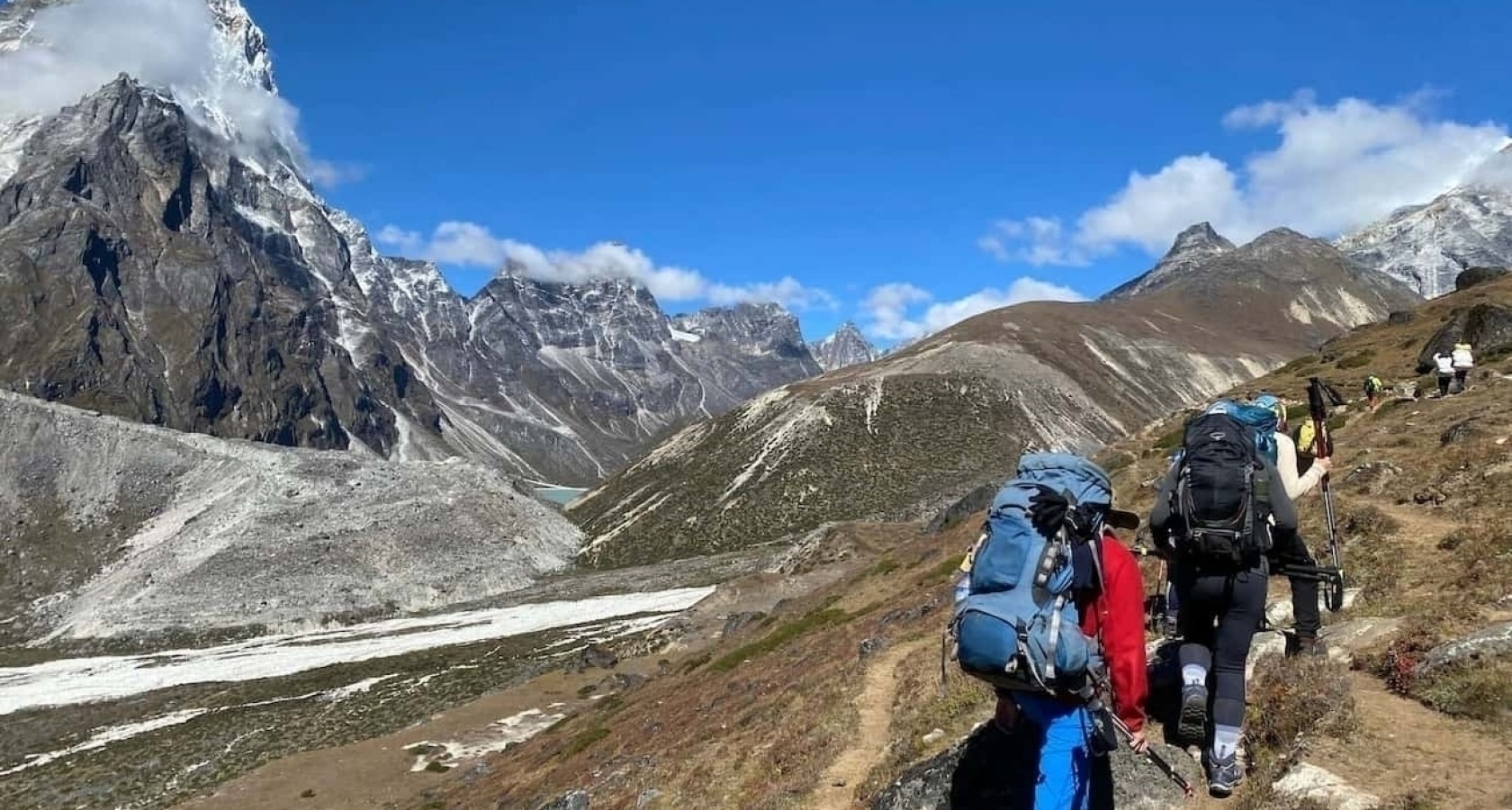
The Everest Base Camp Trek is the dream of many people. Getting close to the Himalayas at some point in life, absorbing the environment, and incorporating the lessons learned from that life journey seems very fascinating.
Life itself is transient, and its fleeting nature cannot be altered by anyone. The impermanence of life becomes evident when we reach heights where even breathing becomes challenging in the usual manner. This journey signifies an understanding of impermanence.
The Everest Base Camp trek is a voyage that brings us close to the towering snow-capped peaks and vast ice formations near the world's highest summit, Mount Everest. It is an expedition that embraces the challenges of the demanding Himalayan life experience, pressing forward despite the hardships.
This journey follows in the footsteps of those who have touched and conquered each of those massive peaks, leaving indelible traces on the glorified history of the region. The primary allure for tourists visiting Nepal is the proximity to these majestic Himalayan peaks.
Our journey to Everest Base Camp starts from Lukla, situated at 2680 meters, and ascends to Everest Base Camp, reaching an altitude of 5364 meters. It takes approximately 12 to 14 days to complete this entire trip.
For detailed itineraries, you can click the link below:
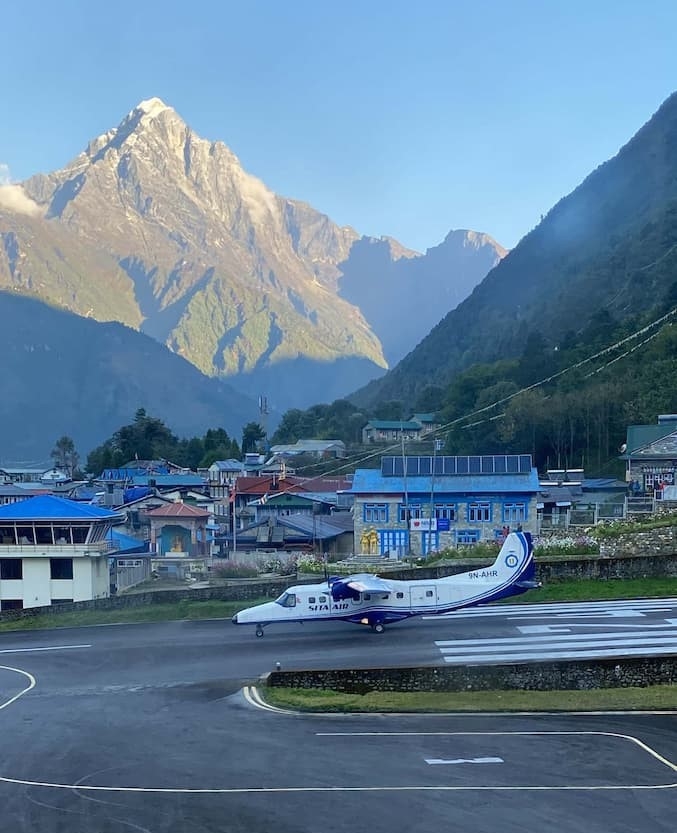
Lukla serves as the gateway to the Everest region and can be reached by air in approximately 30 to 45 minutes. Due to its geographical layout, Lukla Airport is considered risky, prompting the consideration of a road section as an alternative route. The experience of flying amidst the Himalayas in a small aircraft is truly exhilarating, with a smooth descent into Lukla Airport surrounded by clear weather and floating clouds. Constructed in 1964, Lukla Airport was initiated by Sir Edmund Hillary, the first person to successfully summit Mount Everest in 1953. In honor of his historic ascent, it is named Tenzing Hillary Airport.
As we descend into Lukla, the majestic Nupla Himal, and towering Kusum Khanguru Himal come into view. A meal at an available lodge allows time to immerse yourself in the vibrant atmosphere of Lukla, rich with the stories of mountaineers embarking on the challenging journey to conquer the world's highest peak, Mount Everest. The influence of these climbers is evident in the landscape, symbolized by prayer flags fluttering in the wind and a newfound dimension of courage standing tall. This influence extends not only to the landscape but also to the day-to-day lives of the locals.
Situated at an altitude of 2,846 meters above sea level, Lukla serves as the gateway to the world's highest peak. The hustle and bustle of Lukla captivates with its hotels, homestays, cafes, and sublime views of Buddhist culture. Constantly surrounded by picturesque scenes, Lukla lives up to the images seen in photographs. After experiencing the rustic charm of Lukla, our official journey to Everest Base Camp commences, taking our first steps towards Phakding on the initial day. Quaint homes built on the mountain slope welcome you with their unique charm.
During the peak trekking season, Lukla serves as the starting point for hundreds of mountaineers daily heading towards Everest Base Camp. Witnessing climbers from various countries converging in this natural wonderland becomes a beautiful sight in itself. Every village and settlement along the path to Everest Base Camp, and the people residing there, are affected by the presence of Everest. Many locals are directly involved in tourism or mountaineering, serving as guides, porters, or in various support roles. This region welcomes a considerable number of tourists every year. In the fiscal year 2022/23 alone, this region welcomed approximately 57,790 tourists.
Talking about attracting attention, the Solukhumbu District has indeed succeeded in becoming one of the most captivating destinations globally. The outcome is evident in the high quality and standards of the pathways observed along the journey.
After 45 minutes of hiking from Cheplung to Thadekoshi and Ghat, and another 30 minutes from there to Phakding, we will have covered approximately 3 to 4 hours of walking distance from Lukla. The Himalayas, the weather, and the people encountered along the way will fill our hearts with delight. Ultimately, our first day of the journey to Everest Base Camp will end in Phakding.
In the Sherpa language, Phakding translates to "The place where the deity resides," suggesting a divine presence in this locale. Phakding is situated near the confluence of the Dudh Koshi, an incessantly flowing river, with Nupla Himal standing majestically nearby. Positioned at an altitude of around 2,650 meters above sea level, Phakding serves as the familiar stay for the first day of the Everest Base Camp Trek. With a limited number of houses, Phakding primarily accommodates individuals involved in tourism, and hotel businesses, as well as those engaged in agriculture. Stay Overnight in Phakding.
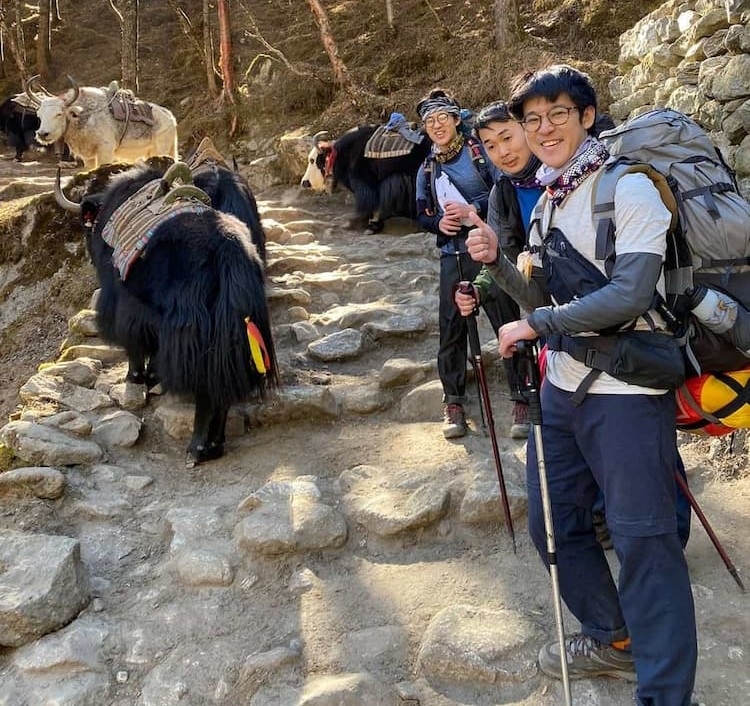
On the second day of the Everest Base Camp trek, after enjoying a hearty breakfast provided by the hotel, filled with the hope of gathering new energy and experiences, we bid farewell and resumed our journey along the trail. Gratitude is extended to the hotel owner for their warm hospitality. When the weather is clear, the majestic Himalayas reveal themselves in all their glory. The village of Phakding is nestled in the lap of the Himalayas, showcasing its mystical charm. The living, language, and culture in Phakding are unique, and despite the differences, a sense of closeness is felt due to the warm hospitality.
As you proceed on the trail, you begin to feel the change in the atmosphere. The gentle flow of the Dudh Koshi River and the continuous murmur of its clear waters add a soothing melody to the environment, creating an enchanting experience that makes you forget the fatigue of the trek along the Everest trail. Along this trail, various facilities are available, whether through air transport or the expansion of trails to accommodate yaks and porters. Due to this, you may encounter yaks and mules on the trail.
Approximately 3 kilometers south of Phakding lies the village of Chomo. In Chomo, we will have lunch, finding solace for our hunger and fatigue. Much like other villages in the vicinity, Chomo embraces the essence of Buddhist culture, and daily life reflects the principles of Buddhism. Situated at an elevation of 2,835 meters above sea level, Manjo, an alternative place to stay other than Phakding, is our next stop.
After Manjo, we officially enter the Sagarmatha National Park, covering an area of approximately 1,148 square kilometers. This national park earned its place on the UNESCO World Heritage List in 1979. The suspension bridge adds an extra dose of enthusiasm as we approach Larcha Dobhan. The sound of the Dudh Koshi River, flowing beneath the bridge constructed across the steep mountain gorge, will leave us mesmerized. In the buffer zone of Sagarmatha National Park, lush vegetation and diverse flora add to the enchantment of the surroundings. Even in this remote wilderness, signs of human presence are evident, harmoniously blending with natural beauty.
We will reach Namche in the evening. The day's journey, with constant ups and downs, may be exhausting, but the novel scenery of Namche infuses you with additional energy. In the bustling settlement of Namche Bazaar, we witness a blend of tradition and modernity. The unique architecture of houses, stupas, and the proximity to the Himalayas adorn Namche with aesthetic charm. The enchanting view is truly otherworldly. We will stay at available hotels in Namche.
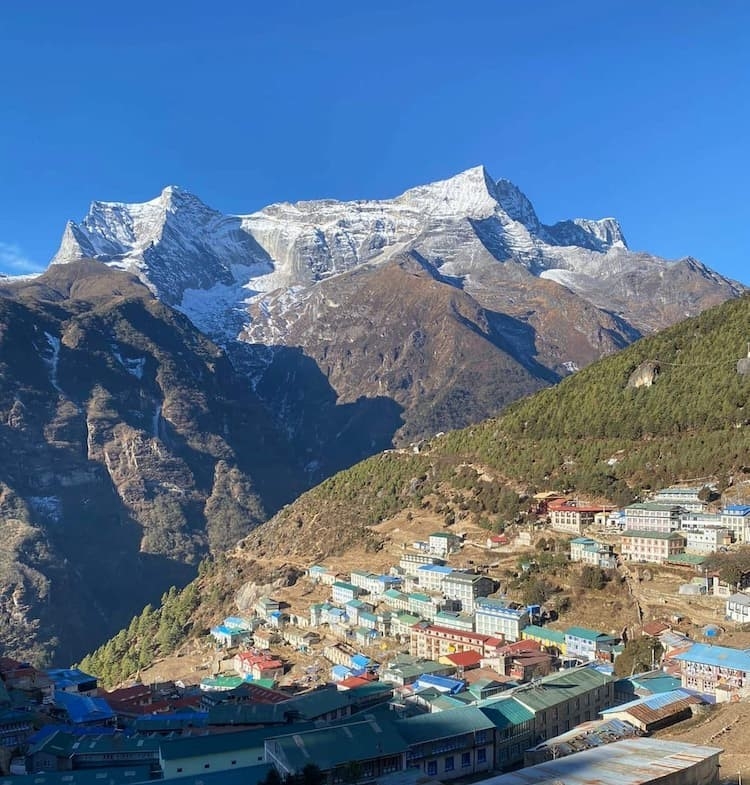
The morning arrival in Namche Bazaar is nothing short of enchanting, with panoramic views of Himalayan peaks such as Kongde, Taboche, Nuptse, Lhotse, Shrestha, Amadablam, Thamserku, and others. Witnessing the Himalayas up close in the morning leaves us in awe. Khumbila Himal, visible from Namche, is worshipped as the deity of Khumbu. Situated at an altitude of 3460 meters above sea level, Namche Bazaar exemplifies the hospitality of the Sherpa community. The scenes, cultural perspectives, and other aspects visible from there have left a remarkable impression on trekkers.
Under the shelter of the Himalayas, Namche showcases the influence of the Sherpa community and their culture. The acclimatization process in Namche Bazaar is crucial for those attempting to climb Everest Base Camp or undertake an Everest expedition. This involves gradually adapting to the changes in physical condition that occur after ascending significantly from sea level. Acclimatization becomes necessary to cope with such changes without adverse effects. On this day, it is advisable to plan a visit to Namche Viewpoint or explore the surroundings.
The easygoing hustle and bustle of people at this altitude is a magical sight in itself. Namche Bazaar, with its vibrant colors, has woven a unique charm for newcomers. The energy of the mountaineers, the stories in every step, and the history embedded in the alleys make Namche a beautiful spectacle, especially during the night. Enjoying the night with good music played in the available bars adds to the unique charm of Namche.
Namche has an extra charm during the night. While the rest of the world sleeps, Namche neither sleeps nor lets the Himalayan peaks it overlooks sleep. Well-equipped facilities, such as hotels, bars, and cafes, cater to the tourists, providing a comfortable stay. This way, you can conclude your third day of the Everest Base Camp journey.
At times, Namche served as a trading hub for those dwelling in the Himalayan region to buy commodities. In history, it was a center for trading yaks and dairy products. After Sir Edmund Hillary and Tenzing Norgay Sherpa conquered the world’s highest peak in 1953, global attention shifted towards Nepal, putting Namche in the spotlight. This brought discussion and eventually led to the transformation of Namche. Leaving behind Namche, we will embark on the journey again after a day of rest.
After breakfast, we continue our journey to Everest Base Camp, heading towards Tengboche. The Everest region is adorned with more than a dozen monasteries, each contributing to its cultural richness. The captivating structures and serene atmosphere inspire travelers. However, beyond the visual appeal, witnessing the Sherpa community's genuine warmth towards adventurers, not just as trekkers but as part of their extended family, leaves an indelible mark on us. The Sherpa community, with its humility and love, has played a significant role in spreading Nepal's name globally through its association with the Himalayan peaks. Experiencing the Sherpa way of life and culture is indeed a cherished and favorite part of our journey.
We will reach Kyangjuma after some time and take a tea break. In front of us, the majestic Himalayan collage unfolds, with its vast and breathtaking beauty. The weather's crispness adds a natural charm. As the intensity of the sunlight increases, the crispness also heightens in proportion. Resting in the serene atmosphere around iconic Himalayan peaks like Kongde, Thamserku, Ama Dablam, and Lhotse, we can rejuvenate ourselves for the upcoming journey towards Phungi Thanga. Gokyo Lake is also a familiar destination for seasoned travelers.
Along the trail, we will reach various settlements, and the trekker in us feels accomplished. The biodiversity along the route is abundant, and we can spot wildlife creatures, mostly Himalayan Tahr. Preservation of such wildlife seems very important. The enchanting Himalayan landscape along the trail makes the journey thrilling. The Himalayan way of life, shaped by the towering mountains, brings a unique perspective to our experience. We can witness traditional agriculture and the resilient lifestyle of the people thriving amid the challenges of fast-paced tourism development.
As we continue on the challenging trail, we will encounter villages nestled along the route. Crossing forests, jungles, rivers, and steep slopes, we finally reach Phungi Thanga. Situated at an altitude of around 3,460 meters above sea level, Phungi Thanga, with its abundant dairy farms, serves as our resting place during the trek. This small village, with limited dwellings, aims to provide facilities for those embarking on the trek.
After having a meal in Phungi Thanga, we continue our journey along the trail. As we ascend, the wind grows thinner, and the dense forest gradually gives way to open landscapes. It will become evening when we reach Tengboche, and experiencing the sunset in the lap of the Himalayas is always a cherished moment. As the evening approaches, we hasten our pace towards the hotel for warmth and comfort.
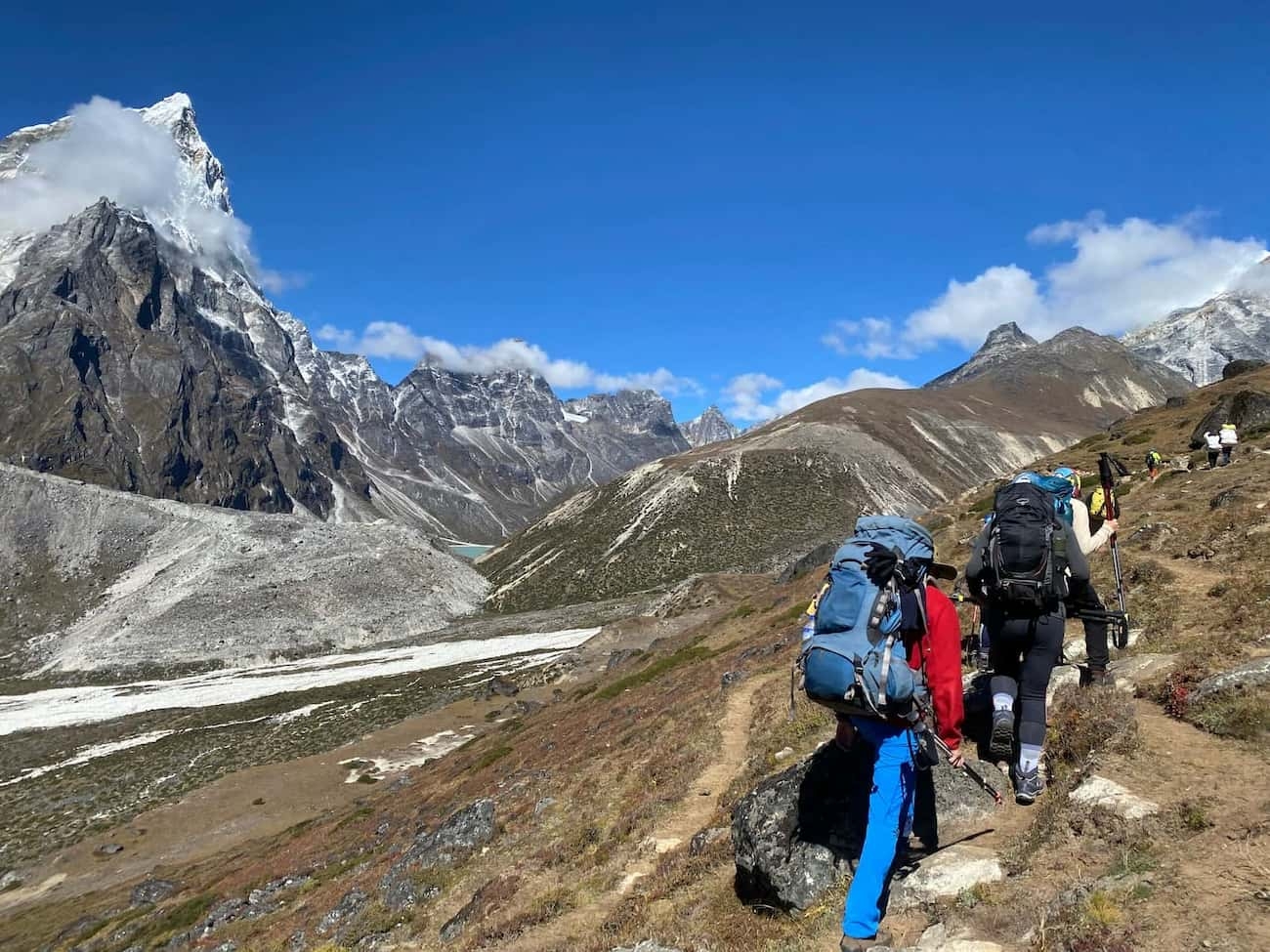
The Everest Base Camp Trek is the dream of many people. Getting close to the Himalayas at some point in life, absorbing the environment, and incorporating the lessons learned from that life journey seems very fascinating.
Life itself is transient, and its fleeting nature cannot be altered by anyone. The impermanence of life becomes evident when we reach heights where even breathing becomes challenging in the usual manner. This journey signifies an understanding of impermanence.
The Everest Base Camp trek is a voyage that brings us close to the towering snow-capped peaks and vast ice formations near the world's highest summit, Mount Everest. It is an expedition that embraces the challenges of the demanding Himalayan life experience, pressing forward despite the hardships.
This journey follows in the footsteps of those who have touched and conquered each of those massive peaks, leaving indelible traces on the glorified history of the region. The primary allure for tourists visiting Nepal is the proximity to these majestic Himalayan peaks.
Our journey to Everest Base Camp starts from Lukla, situated at 2680 meters, and ascends to Everest Base Camp, reaching an altitude of 5364 meters. It takes approximately 12 to 14 days to complete this entire trip.
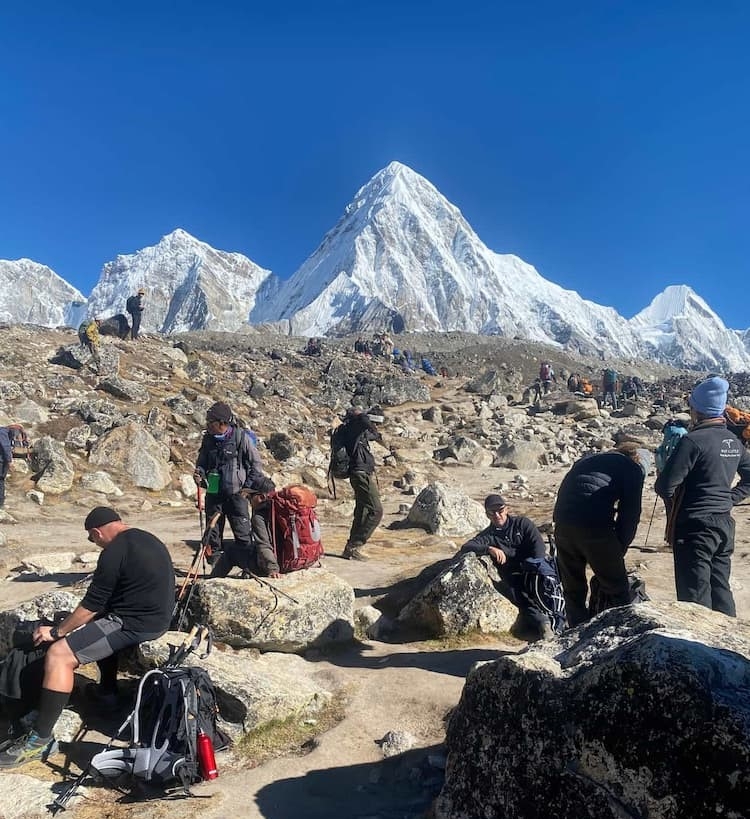
Being surrounded by the Himalayas as we lay down to rest and waking up in the morning to witness the Himalayas is such a delight. Dingboche, nestled beside the tranquil Himalayas, feels like a mystical settlement created in the mind of a fiction designer. After enjoying our breakfast, we thank the caretaker of the lodge and embark on one of the most challenging treks after Dingboche, with Lobuche as our next destination.
The higher altitude brings crisp air, and the surroundings are pristine. The vast meadow surrounding us captures our attention as we marvel at the beauty of the open field. Generally, as we ascend above sea level, the concentration of oxygen in the air decreases. Due to this, we can experience symptoms like shortness of breath, body fatigue, and headaches. If feeling uneasy, please share it with the guide, and they will take care of it. In case of an emergency, our team is ready for helicopter rescue. The breathtaking views of the Himalayas captivate our minds, and we become fearless. Balancing our journey with care, we take the time to acclimatize, recognizing our body's limitations at each stop.
Upon reaching such altitudes, imagining the harshness of the cold in the middle of winter becomes beyond our comprehension. In every settlement, we encounter a landscape of rocks and stone houses, constantly walking through the rifts created by glaciers, seeing nothing but snow, the Himalayas, and the sky. After continuously ascending from Dingboche, we reach Thukla and find a place to rest. Since there are no other settlements along the trail, Thukla provides facilities for trekkers and mountaineers to eat and stay in hotels.
After having our meals and taking a short break in Thukla, it is time to resume our journey. We carefully consider the path leading towards Lobuche as our destination. There aren't many options for transporting goods to a place like Everest. You either have to carry the supplies on your back from below, hire a helicopter service, or explore other alternatives that we had not considered.
After 1 hour of walking, we reach Thukla Pass, where we observe a serene atmosphere of sorrow. There is a memorial for those mountaineers who have climbed Everest and could not return safely. With a heavy heart and burdened feet, we move forward, without any alternative before us. At times, we ponder how life will cost us so dearly. Those who proclaim that breathing is easy might also discover in this journey that everyone's life is abstract. Living, too, is abstract. We learned on this journey that while it may seem easy for us, is it easy for everyone?
Like a string of pearls, the Himalayan mountain range also stretches ahead of us. While we head towards Lobuche, we follow the trail marked by the rock formations crafted by the Khumbu Glacier. We will reach Lobuche before the day turns dark. Our journey will prove to be one of the most challenging ascents. Taking short breaks, sharing experiences with other travelers, and gaining a sense of relief and comfort from the stories as well. We will stay at the Lobuche guesthouse, finding ourselves at an altitude of 5030 meters, well above sea level. Before our eyes stretch the magnificent views of Pumori, Lingtrung, Khumbuche, and Nuptse Himal. The atmosphere there enchants as the sun's radiant rays illuminate these majestic peaks. Compared to other places, Lobuche is significantly colder. The few lodges and teahouses in Lobuche serve as a suitable stop for mountaineers and trekkers to spend a night.
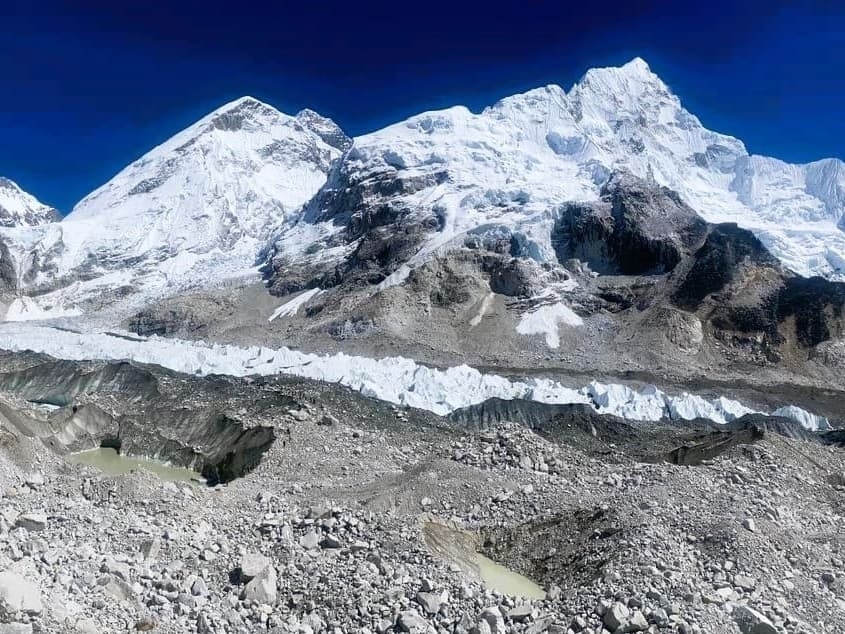
No matter how challenging and tough the journey gets, there is always something that keeps pushing us forward with constant determination. It is the love emanating from camaraderie or the love expressed for the Himalayas that emerges from within. Whatever it may be, with such determination, we will move ahead after our breakfast.
The cliffs pose a challenge, but when we conquer those challenges and ascend the steep incline, we will be welcomed by the grandeur of Pumori Himal standing tall and majestic, showcasing its enhanced beauty. It will take one more hour to reach Gorakshep. On the trail, you can see helicopters coming and going for rescue, which is quite common in the Himalayas.
We hold so much affection for the Himalayas because its majestic views, like other natural scenes, captivate our hearts. When we look back from there, it feels like we have arrived at a place that has separated itself from human reach. There stand the towering peaks with their unique charm. The challenging journey through these breathtaking views justifies itself.
We will find ourselves in moments where we will be lost in the scenery, and in those moments, we will discover an opportunity to recognize our own existence. The Himalayas loom large in the distance from the very beginning. As we approach the Khumbu Glacier, the imposing peaks and unique formations of those mountains appear like small sculptures crafted by a skilled designer.
After reaching Gorakshep, a small settlement, our main destination, Everest Base Camp, and Kalapatthar, is not that far. It is from Kala Patthar that we can directly witness the grandeur of Mount Everest along with Lhotse and other majestic Himalayan peaks. It took four hours to reach Gorakshep. Gorakshep is the final station before reaching Everest Base Camp along with the path leading to Kala Patthar. There you can find accommodation and food facilities.
After having our meal, we will take some rest in Gorakshep and continue our journey forward. The trail from Gorakhsep to Everest Base Camp and KalaPatthar is separate. According to local accounts, Gorakshep was initially considered the base for Mount Everest before the establishment of the current Everest Base Camp. Moving forward from Gorakshep, the journey will become truly meaningful from the very first day.
The thin air makes it a little difficult to breathe, so you can stop at various places, take in the emptiness around you, and prepare yourself for the challenges ahead. Those moments of uncertainty are defining, where every step taken feels courageous.
From Gorak Shep, it takes approximately 2 hours to reach Everest Base Camp. The trail winds through a rocky and glacial path, offering both a challenging and rewarding experience for trekkers. This segment of the trek is a highlight of the entire journey. Upon reaching Everest Base Camp, you find yourself surrounded by the towering presence of Mount Everest on all sides, making it the most memorable part of the expedition.
Take the time to capture the breathtaking views with photos and videos, savoring the accomplishment of reaching this iconic destination. After enjoying the Base Camp, we'll return to Gorak Shep for an overnight stay, preparing for the thrilling adventures awaiting us the next day.
To witness the spectacular sunrise from Kala Patthar, we'll start our ascent early at 3:00 am, climbing the hills to catch the first light of day breaking over the Himalayan peaks. After a brief climb, we will reach Kala Patthar. From there, you will be close to Mount Everest, making it a great experience, especially if it's your first time at such a high altitude. The view, the moment, and the entire experience are beyond measurement, something that cannot be captured by any device or described by words.
"Here I am alone, The Himalayas too are alone. Here I am alone, The world too is alone. Here I am empty, The Himalayas too are empty. Therefore, Why should I not fill myself with various colors? Why should I not adorn myself with melodies? One day, I too will be lost in this vastness. Therefore, Why should I not write history in my own footsteps?" – Poem by "Pushpa Devkota"
Situated at an altitude of around 5644 meters above sea level, Kala Patthar is considered one of the most suitable places for observing the panoramic view of Mount Everest. Typically, trekkers visit Kala Patthar after reaching the Everest Base Camp. The unique topography of Mount Everest makes it challenging to see its summit clearly from any other vantage point. Weather changes in an instant, affecting the visibility of Mount Everest from Kala Patthar. Therefore, trekkers make their way to Kala Patthar to get a closer and clearer view of the majestic summit of Mount Everest.
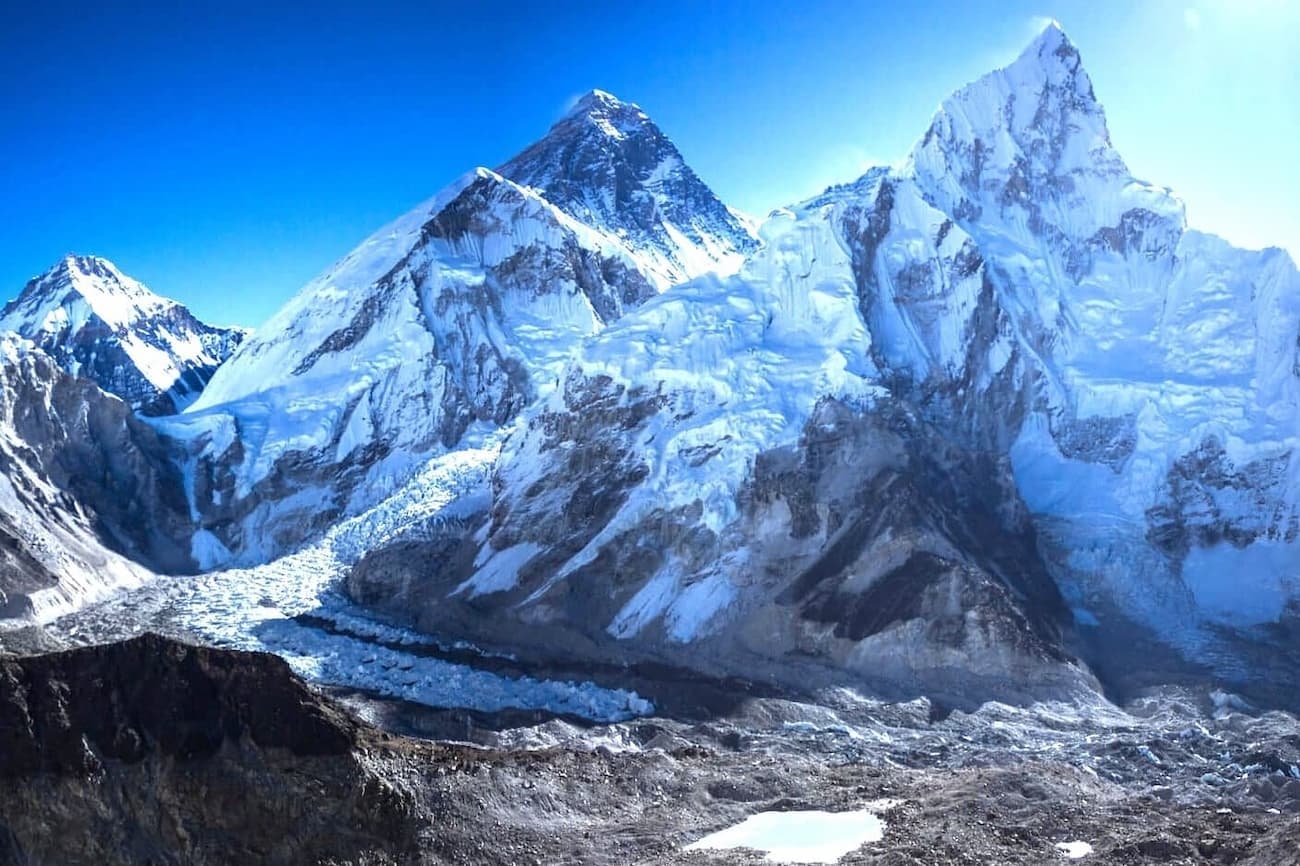
The world’s highest peak, situated at an elevation of 8848.46 meters above sea level, is recognized as Mount Everest. It is a landmark that has brought global recognition to Nepal. Thousands of tourists come to witness it every year, and Mount Everest, along with its association with Nepalese identity, stands as an emblematic symbol. However, it is not just about Mount Everest; it is part of the entire Himalayan range. This natural palette that spreads below is not only breathtakingly beautiful but also a small yet distinct Nepal.
Surrounded by Himalayan giants, including Mount Everest at 8848.86 meters, Lhotse at 8516 meters, Pumori at 7161 meters, and peaks above six thousand meters such as Thasmerku, Kangtega, Taboche, and Laboche, we have the opportunity to witness these majestic mountains up close.
From Kala Patthar, the sun’s rays paint the summit of Mount Everest in vibrant colors. After spending some time there, we descend from Kala Patthar and return to Gorakshep the same day. From Gorakshep, we head towards Feriche. Typically, mountaineers and trekkers returning from Everest Base Camp make Feriche their stop rather than Dingboche. From Feriche, we descend further and eventually arrive at Namche. After that, we will return to Lukla. It marks the conclusion of our grand Everest Base Camp journey. In Lukla, we celebrate the success of this monumental journey with our team.
In this Everest Base Camp Trek journey that begins from Lukla Airport, we will collect many new experiences. From the mesmerizing Ama Dablam to the spiritual mantras inscribed on the stones along the path, and the beauty of the rhododendron forests found in the Himalayan region. During this journey, we will have the opportunity to absorb the history of one of Nepal’s oldest stupas. Similarly, while passing through the challenging Thukla Pass, we will be awestruck by the fragility of life. Amidst the difficulties of the Himalayan terrain, we will find solace in the hospitality of the Sherpa community. We can share our experiences with all the people we come across from different countries exploring the Everest region. Confronting every challenge on the path to the world’s highest peak, Everest adds a new chapter to our life.
If you have queries related to trekking and tours in Nepal, please contact Treklanders Adventures. Our team is always ready to help you customize your itinerary and make your plans a success. For detailed itineraries, you can click the link below
Here is our contact information for further queries: Email: [email protected] WhatsApp/Viber: +977 9851019683.
? The Everest Base Camp Trek typically takes about 12 to 14 days to complete. The journey starts from Lukla Airport (2680 meters) and ascends to Everest Base Camp (5364 meters).
? Highlights include Lukla to Phakding, experiencing the vibrant atmosphere of Lukla, entering Sagarmatha National Park, reaching Namche Bazaar, acclimatization day, Tengboche Monastery, and the final ascent to Everest Base Camp.
? Acclimatization is crucial, with a day in Namche Bazaar for adjustment. Trekkers can visit Namche Viewpoint or explore the surroundings. This helps in adapting to the changes in physical condition due to increased altitude.
? Kala Patthar, situated at around 5644 meters, is one of the most suitable places for observing the panoramic view of Mount Everest. Trekkers visit it for a closer and clearer view of Everest's majestic summit.
? After reaching Everest Base Camp and Kala Patthar, trekkers descend to Gorakshep, and the journey continues to Feriche, Namche, and finally Lukla. This marks the conclusion of the Everest Base Camp journey.
? For more information and customized itineraries, you can contact Treklanders Adventures. Reach out to them via email at [email protected] or on WhatsApp/Viber at +977 9851019683. Detailed itineraries can be found here.
? The journey from Dingboche to Lobuche offers expansive views of Himalayan peaks, including Taboche, Cholatse, Cho Yu, Lobuche, Nuptse, Island Peak, and Ama Dablam, creating a challenging yet rewarding ascent. Dingboche serves as an acclimatization stop before continuing.
? Thukla Pass holds a memorial for mountaineers who climbed Everest and couldn't return safely. Trekkers reflect on the challenges of the journey, passing through a serene atmosphere of sorrow before moving forward.
? Gorakshep is the final stop before reaching Everest Base Camp and Kala Patthar. The journey to Everest Base Camp from Gorakshep offers a challenging trek through a rocky and glacial path, surrounded by the towering presence of Mount Everest.
? After reaching Everest Base Camp and Kala Patthar, trekkers descend to Gorakshep and then proceed to Feriche. The journey continues through Namche and eventually returns to Lukla, marking the conclusion of the Everest Base Camp trek.
? Lukla Airport, considered risky due to its geographical layout, serves as the starting point for the Everest Base Camp trek. It offers a thrilling experience of flying amidst the Himalayas and has historical significance initiated by Sir Edmund Hillary.
? Yes, Treklanders Adventures offers the option to customize your Everest Base Camp Trek itinerary. Contact them for personalized plans based on your preferences and requirements.
? The trekking route is enriched with Sherpa culture, vibrant villages, and the influence of mountaineering. Each location has its own charm, with stupas, gumbas, and stone gates welcoming trekkers, creating a unique experience.
? The trek incorporates acclimatization days, and trekkers are advised to share any discomfort with the guide. In case of emergencies, the team is equipped for helicopter rescue. Adapting to changes in physical condition is essential during the ascent.
? Acclimatization is crucial, especially in Namche Bazaar and Dingboche, to help trekkers adapt to high altitudes gradually. Visiting Namche Viewpoint and exploring the surroundings are recommended during acclimatization days.
? Namche Bazaar offers enchanting views of Himalayan peaks, and its vibrant atmosphere reflects Sherpa culture. The town serves as a hub for trekkers and climbers and features unique architecture, making it a memorable part of the journey.
? Tengboche, with its prominent monastery, holds significant cultural importance in the Everest region. The Sherpa community's warmth and its role in spreading Nepal's name globally through association with the Himalayan peaks make Tengboche a cherished stop.
? Kala Patthar, situated at around 5644 meters, provides a close and clear view of Mount Everest, making it one of the best vantage points. The sunrise experience from Kala Patthar, capturing the first light breaking over Himalayan peaks, is truly spectacular.
? The trek involves challenging terrains, ascents, and descents, with varying altitudes. Trekkers are encouraged to communicate any discomfort with the guide, and the journey is balanced with acclimatization stops and gradual adaptation to changes in physical conditions.
? The Everest Base Camp trek offers an opportunity to interact with people from different countries, share experiences, and understand the Sherpa culture. It contributes to a global connection as climbers and trekkers from around the world converge in this natural wonderland.
? Yes, the trek is a holistic experience encompassing cultural immersion, breathtaking landscapes, and personal growth. It involves absorbing history, embracing Sherpa hospitality, and confronting challenges, making it more than just reaching the world's highest peak.
? Lukla Airport, also known as Tenzing Hillary Airport, is the gateway to the Everest region. It offers an exhilarating experience with a short flight amidst the Himalayas. Constructed in 1964, it was initiated by Sir Edmund Hillary, adding historical significance to this essential entry point.
? The Everest Base Camp trek embraces challenges, including risky flights, diverse terrains, and varying altitudes. The journey symbolizes resilience, with trekkers pressing forward despite hardships, reflecting the spirit of those who conquered the Himalayan peaks.
? The presence of Everest and the influx of tourists significantly impact local communities. Villages along the path are influenced by mountaineering, with many locals engaged in tourism-related roles. The region witnesses a considerable number of tourists annually, contributing to its captivating allure.
? Phakding, meaning "The place where the deity resides" in the Sherpa language, serves as the initial stop. Located near the Dudh Koshi River confluence, it provides a unique charm with limited houses. Phakding's rustic appeal and its Sherpa cultural influence set a captivating tone for the Everest Base Camp journey.
? The Sherpa community's role is significant throughout the trek. Their warmth, humility, and love towards adventurers contribute to the unique charm of the journey. The Sherpa way of life and culture become cherished aspects, enriching the overall experience.
? Sagarmatha National Park, a UNESCO World Heritage Site, adds to the trek's beauty. The suspension bridge, lush vegetation, diverse flora, and harmonious blend of human presence with natural beauty in the park's buffer zone contribute to the enchantment of the surroundings.
? Dingboche, situated at 4,410 meters, marks a vital acclimatization stop. It provides expansive views of Himalayan peaks and showcases the challenges associated with obtaining facilities in remote areas. Dingboche's isolation and sustainable energy use contribute to its unique features.
? Poetic insights, such as the verses by Pushpa Devkota, evoke the abstract and mystical nature of life and the Himalayas. The narrative reflects on the transient beauty of existence and the journey's impact, creating a sense of wonder and introspection.
? The Tengboche Monastery is a prominent Buddhist monastery in the Khumbu region, built in 1923 and renovated multiple times. It holds immense religious and historical significance, contributing to the spiritual aura of the area. It is renowned for its unique inscribed stones and annual rituals.
? The journey from Dingboche to Lobuche presents challenges like higher altitudes and thinner air. Trekkers may experience symptoms, but careful acclimatization is emphasized. The rewards include captivating views of Taboche, Cholatse, Cho Yu, Lobuche, and other peaks, providing a memorable experience.
? Thukla Pass is a significant point on the trek, featuring a memorial for mountaineers who climbed Everest but couldn't return safely. The memorial adds a somber atmosphere, emphasizing the fragility of life in the harsh Himalayan terrain.
? The narrative reflects on the magical sunset in Dingboche, portraying the enchantment of the Himalayan peaks turning golden in twilight hues. It captures the moment's beauty and significance, offering trekkers a unique and memorable experience.
? The final ascent to Everest Base Camp takes approximately 2 hours from Gorakshep. The rocky and glacial path offers both challenge and reward. Trekkers are surrounded by the towering presence of Mount Everest upon reaching the Base Camp, marking the most memorable part of the expedition.
? Kala Patthar, situated at an altitude of around 5644 meters, is one of the most suitable places for observing the panoramic view of Mount Everest. Trekkers visit Kala Patthar to get a closer and clearer view of the majestic summit of Mount Everest, as its unique topography makes it challenging to see from other vantage points.
? Trekkers ascend Kala Patthar early at 3:00 am to witness the spectacular sunrise over the Himalayan peaks. The experience, beyond measurement, captures the first light breaking over Mount Everest, providing an unforgettable and awe-inspiring moment.
? The trek concludes with trekkers returning from Gorakshep to Feriche, Namche, and finally Lukla. In Lukla, the success of the monumental journey is celebrated with the team. It symbolizes the completion of the Everest Base Camp expedition and the challenges overcome during the trek.
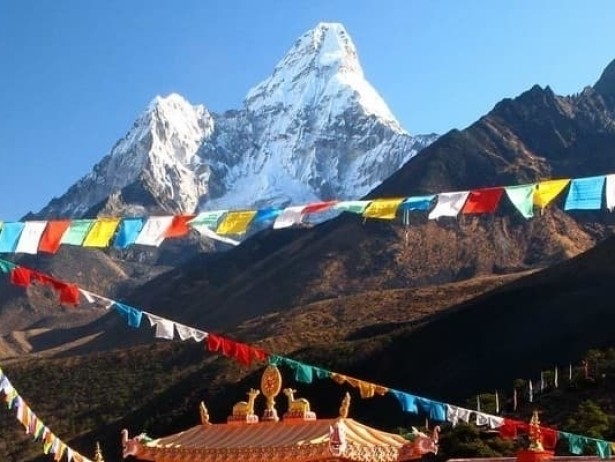
Overview:Millions of people are keen to learn about the costs associated with Everest Base Camp Trekking. If you’re genuinely interested in the c...
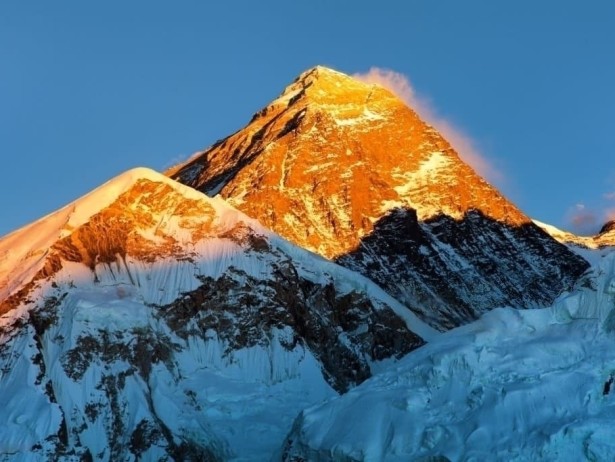
Introduction:Addressing the challenge of the Everest Base Camp trek falls within the moderate difficulty range. Individuals unfamiliar with high-altit...
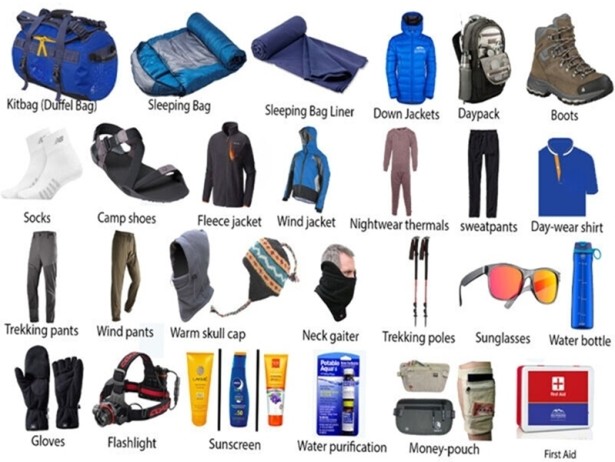
Your Ultimate Everest Base Camp Trek Packing List Guide – Treklanders AdventuresAt Treklanders Adventures, we provide you with the essential gear and...
